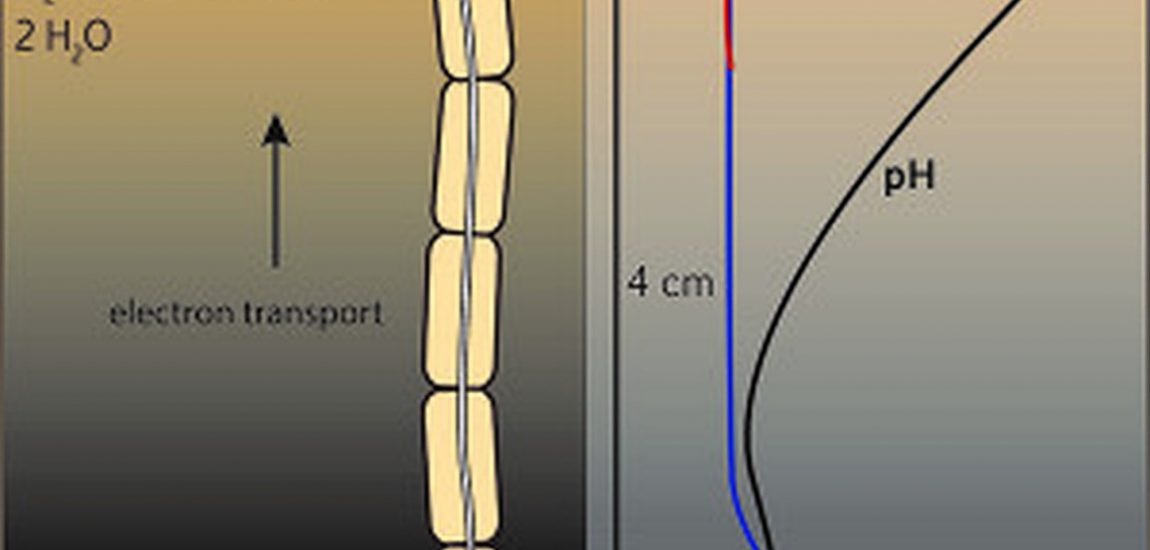
Learning about cable bacteria
This year, the third “International Workshop on Microbial long-distance Electron Transfer by Cable Bacteria” was organized in Munich (Germany), after previous editions in Aarhus (Denmark) and Antwerp (Belgium). This three-day workshop tries to group all scientists who are involved in cable bacteria research. This little organism is still enigmatic, and is being studied from all angles, which means that during this workshop a wide variety of scientists, ranging from microbiologists to geochemists, are gathered. Taking example from the Gordon Research Conferences (GRC), all presentations and discussions were held in an open and constructive atmosphere. We, two young PhD students from the Vrije Universiteit Brussel (VUB) and the Royal Netherlands Institute for Sea Research (NIOZ), got the opportunity to participate in this unique event through the EAG student sponsorship.
Since the first publication (Nielsen et al., 2010) the process of electrogenic sulfur oxidation (e-SOx) has been short of a revolution in both the fields of microbiology and geochemistry. Cable bacteria have been shown to form a long (more than 5 cm!) and filamentous structures, that consist of more than 10000 individual cells. This specific structure allows the decoupling of oxygen reduction and sulfide oxidation over a spatial range of several centimeters and bypasses the traditional redox cascade in the sediment. The bottom cells of the cable bacterium will “harvest” electrons from sulfide oxidation which are then transferred cell-to-cell over the whole bacterial string to finally reach the upper cells of the bacterium where the electrons are used to reduce oxygen. Originally discovered in laboratory incubation experiments, evidence for cable bacteria across the globe has recently been found. It is thus clear that these small organisms are an exciting PhD topic!
Let’s start at the beginning. To reach the location of the workshop, we had to travel to the charming village Schliersee in the pre-Alps, an hour South of Munich, Germany. From Belgium (the country where we both live), there are ample opportunities to get there: plane, train, car … Since we were not going alone, the decision was rapidly made: take the train and do a ‘road-trip’! After a ‘relaxing’ journey of about 10 hours, we arrived in Schliersee. To access the conference location we had to take a cable car (how fitting for our research subject!) up to a typical German ‘Alm’ on the hill, complete with the cosy rooms. On the cultural side, Schliersee has got its name from the beautiful lake next to the town (as you can see from the picture).
The first night was a nice reunion for everybody who attended previous conferences, but it was also a very good moment for the newbies to present themselves to the ‘routiniers’. After a few drinks (the local speciality), everybody went to bed to be rested for a very exciting first day!
The next two days proved to be an intensive series of presentations (9 to 17!) followed by a relaxing (!) keynote after dinner. During the second day we both had a slot of 15 minutes to present our latest results from our laboratory experiments that we had just finished up. Also, we both had a poster with data we had just collected, and as is the aim of this workshop, we got a lot of useful feedback from the more experienced people present.
Before you think that these three days were all work and no play: there were also leisure moments foreseen! Given the fact that there was snow during the whole stay, the whole group went for snow walks, sleigh rides, night walk with glühwein tasting …
After the second day, the morning was designed to have small group discussions about further experiments and possible collaborations. Next year we will see whether these discussions were fruitful!
This was also the end of the workshop, and we had to say goodbye to all participants… When most went home, we had decided beforehand that we could take the opportunity to stay an extra night in Munich, so we took the train back and visited the city for the rest of the day! While those two days of science where very intensive, we both took the train home very happy but also very tired!
About the authors
Sebastiaan van de Velde is in his second year of his PhD at the department of Analytical, Environmental and Geochemistry (Vrije Universiteit Brussel, Belgium). Currently he is working on the geochemical impact of electrogenic sulfur oxidation in marine sediments, with a focus on trace metal cycling. His promotors are Prof. Dr. Yue Gao (Vrije Universiteit Brussel) and Prof. dr. ir. Filip Meysman (The Royal Netherlands Insitute of Sea Research and Vrije Universiteit Brussel).
Laurine Burdorf is a 4th year PhD at the Netherlands Institute for Sea Research (NIOZ, Yerseke Netherlands). Her project is focused on the determinants of the distribution of cable bacteria in the environment as well as the effect of cable bacteria on the geochemistry of the sediment. The promotor of this project is Filip Meysman.
